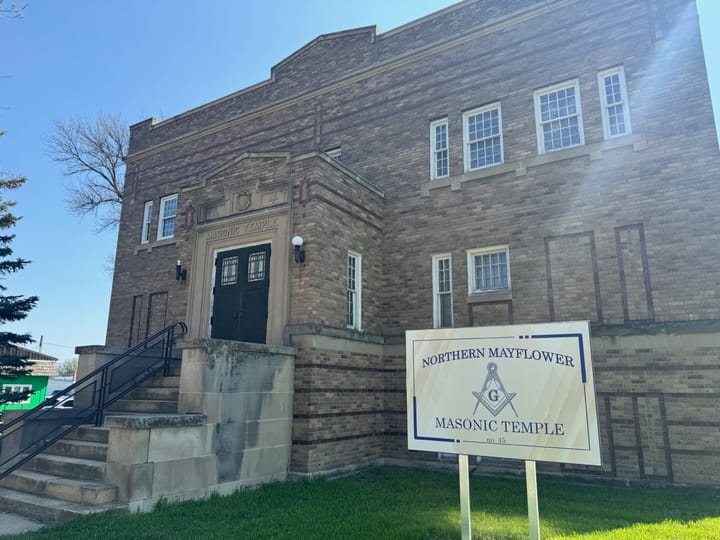Many towns struggle to recruit, retain officers
More creative efforts needed to ‘Back the Blue’

Recent legislative measures providing grants toward attracting law enforcement personnel are welcome in communities across the state, but it remains a struggle to find answers beyond one-off bonuses and additional advertising for open slots, community leaders say.
The situation is particularly problematic in smaller communities, they say, with housing and other service shortfalls.
The recent deaths of officers in Fargo and Beulah this year also bring into stark focus the dangers of police work.
Currently, at least 57 localities in North Dakota seek police officers, sheriff deputies or other law enforcement staff, with some like Bismarck advertising at least 10 open positions, according to the North Dakota State and Local Intelligence Center jobs listings page.
“Many years ago, there weren’t enough openings for the number of officers that were coming out of the academies, and now it’s just the opposite,” said Steven Gutknecht, current president of the North Dakota Peace Officers Association and an investigations officer in Williston.
“There’s very few recruits coming out and lots of openings around the state,” Gutknecht said.
Nationwide, recruitment and retention are down considerably, particularly in the past few years with burnout from the Covid crisis and calls to “defund” police departments in the wake of the George Floyd death and other high-profile incidents during arrests and apprehensions. A generation of Baby Boomer police is also retiring out.
Between 2020 and the end of 2022, 65 percent of agencies across the country witnessed an increase in retirements, according to data from Washington-based Police Executive Research Forum report released in August. There was also a 66 percent an increase in resignations and 69 percent of departments saw declines in applications for open positions in that same period.
Some blame goes toward national media attention on cases that haven’t portrayed law enforcement in a favorable light, Gutknecht said, but added he thought that sentiment wasn’t as prevalent in the Midwest.
House Bill 1307, signed by Gov. Doug Burgum in April, provides $3.5 million through 2025 for recruitment and retention bonuses, as well as tuition for trainees to departments across the state, with at least $750,000 of that going to agencies with under 10 officers.
Gutknecht said the grants have been appreciated and helpful so far, and that a lot of work needs to be done by police and sheriff departments and the localities they serve themselves.
“They’re going to have to make themselves more desirable than other departments to attract those candidates, either someone already in law enforcement, or a new person just looking to get into law enforcement,” he said.
Besides higher salaries, things like establishing wellness programs, exercise programs and other perks are needed to recruit in a demanding workforce shortage environment, he said.
“You better have a comparable salary or better salary than your neighbors, you better have, comparable benefits or better benefits than neighboring agencies and then you better keep them happy while they're there, and wellness programs are a big part of that,” Gutknecht said.
Rural woes
While bigger pay and benefits packages and wellness programs might be attractive within the ability of bigger departments across the state to provide, they are often a challenge in smaller communities lacking services like gyms and entertainment and, most importantly, housing.
Communities like Carrington, Harvey and Garrison – all currently seeking at least one officer if not more – struggle to attract and retain officers annually even with increased pay rates. Officers are often attracted to bigger cities with available housing, higher pay and other perks, community leaders there say.
“One thing small towns have a problem with, and especially here, is housing,” Garrison mayor Stu Merry said. “Finding housing is a big problem in Garrison because we are an attractive community for retirees and young families who like accessibility to the Lake [Sakakawea].”
Garrison was able to access $5,400 in the grant funding, Merry said, with most going to officer retention, and the rest available for a sign-on bonus.
“Small towns have as much of a need as bigger cities, because you know, criminals and drug dealers look for soft targets,” he said.
Currently the police force there has two officers, which stretches them thin, Merry said.
“We definitely need a third because it’s been pretty tough on the two officers,” he said.
In Carrington, where there are two officer openings, the story is similar. Mayor Tom Erdmann has experienced a situation where sign-on bonuses or tuition reimbursements were given, with officers required to stay for at least two years, only to see them leave after those two years were up.
“That’s kind of what we’re seeing, either people want to be closer to family, closer to roots, closer to entertainment, or the two guys were young and single, so maybe closer to finding a spouse,” Erdmann said.
Carrington has also been able to bump its pay scale from $42,000 to $58,000 for a starting officer position, as well as a 15 percent increase for current officers, but since everyone else is raising wages as well, the shine wears off that attractiveness quickly. Housing availability is also an issue there.
The grant funding has amounted to a little over $11,000 for Carrington, the mayor said, which has helped with bonuses and tuition, but doesn’t really cover what the city and county have had to increase wages by.
“We’ve had enough turnover with this five-man force that we’ve been down to two at times, and we're trying to provide twenty-four-seven protection, which you can't really do unless you got three full time people,” Erdmann said. “And even then it's going to cause some burnout, so we need at least four.”
Creative solutions wanted
In Harvey, which has aimed to operate with at least a four-man department since the mid-2000s often runs with just two, according to city auditor Karen Nordby. Paying enough for police without overburdening local taxpayers is a challenge in small town North Dakota, she said.
Housing availability, lack of “excitement” both for lifestyle and for police work, are three of the main challenges for her community in attracting and retaining law enforcement staff.
Back the Blue style grants are more than welcome, she said, but it would be helpful if some of the funding could be built into the system so communities could better plan for salary increases.
Bonuses, she said, are also a bit tricky since knowing what that would be the next year is uncertain. And then there’s the fairness factor of giving a bonus to a new recruit at the same time you’re giving a bonus to someone who has been at the force several years, she said.
Unlike the examples from Garrison and Carrington, one creative solution that Harvey found was to purchase a local duplex with some funding from the local job development authority which has been set aside mainly to house police officers.
“So we have a place that they can rent for a fairly reasonable price, and we did renovate it so it’s decent and at least they can feel comfortable,” Nordby said.
“Housing is a huge challenge when you try to get law enforcement in here and then there's nothing to buy, or it's a premium price, or it's crappy because it's cheap,” she said. “So it’s hard and I know that's what everybody's facing in the housing market, as well, but really that's the challenge.”
The North Dakota News Cooperative is a nonprofit news organization providing reliable and independent reporting on issues and events that impact the lives of North Dakotans. The organization increases the public’s access to quality journalism and advances news literacy across the state. For more information about NDNC or to make a charitable contribution, please visit newscoopnd.org.



